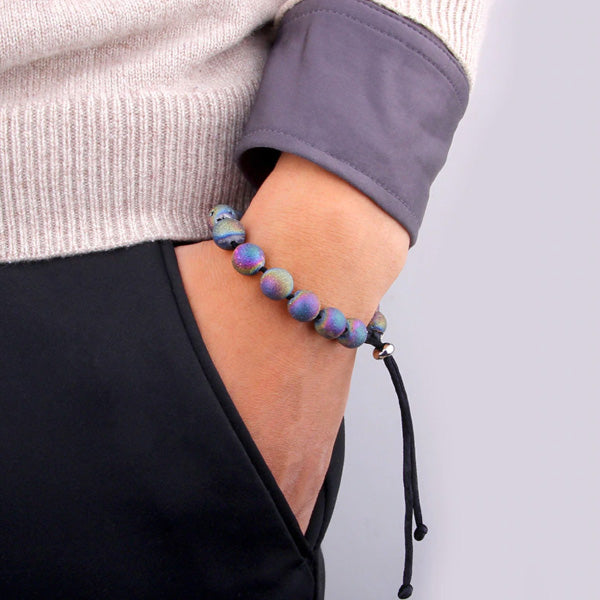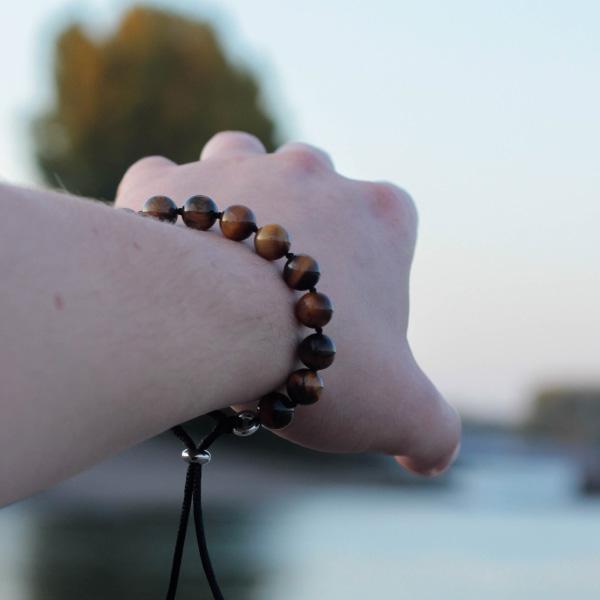How to Start Urban Gardening
You have a green thumb and love growing flowers and vegetables yourself - but you don't have a garden? No problem. With our tips on where to start with urban gardening, you can transform your balcony into a colorful green landscape.

Take a closer look at your balcony
Before you drive to the nearest plant shop and stock up on flower seeds and vegetable seedlings, you should take a quick look at your balcony.
Because its size, orientation to the sun and shade cover largely determine which plants are best suited for your balcony and which are not.
Measure your balcony
By this call to action, we mean that you know in detail how much space you have available and can plan your balcony garden better. From the beginning, you should also consider other balcony decorations when planning. Otherwise, it can quickly become too tight on your balcony during flowering.
Because of their relatively easy mobility, tubs and pots are often used for gardening on the balcony, but vertical gardens are also becoming increasingly popular with balcony gardeners.
Alignment to the sun
In addition to the balcony's size balcony, its orientation towards the sun is an essential factor for successful gardening. The following lighting conditions can be differentiated:
- North - shady, cool
- East - morning sun
- South - midday sun, sunny, warm
- West - sunny, relatively windy
Vegetables need a lot of sunlight, and the optimal balcony orientation is south, southeast or southwest. East or west are also possible.
Depending on the balcony orientation, you should choose different flowers. While some grow on a south-facing balcony in the best possible way, other plants do not disturb shadows and an accompanying drop in temperature.
Are you a south-facing balcony owner? Then you will enjoy classics such as geraniums, petunias, and blue daisies. Rosemary, lavender, sage and thyme also tolerate the heat and spread a pleasant smell.
Even if you are not one of the lucky owners of the south-facing balcony, you do not have to despair. Because there are also lovely options for balconies in the shade.
A real survivor is a fuchsia, which gets by without the sun. It blooms and feels at home where other balcony plants are already hanging down. This also applies to the snowflake flower and the tuberous begonia. Two true weather-defenders are also Bleeding Heart and the Bellflower.
If a few rays of the sun often get lost on your balcony, laurentia or liver balm would be a good option. However, cold and darkness don't like these flowers as much as fuchsia, for example.
In case of a large balcony
The following plants are suitable for large balconies: oleanders, garden hydrangeas, cylinder cleaners, olive trees, angel's trumpet and lemon trees.
The popular oleander is about two meters high when fully grown and always blooms from June. Garden hydrangeas are gorgeous to look at because of their white, pink flowers. Olive trees are only for balconies with excessive space because they reach heights of between two and three meters.
Alternatively, they are also available as miniature editions, which have to be trimmed to the right size every year.
Plan with your pet in mind
If you have a pet, you don't want him or her to do anything risky for their health. But what does that mean for your plants on the balcony?
For example, dogs and cats are not allowed to eat raw tomatoes, potatoes, or nightshades because they contain solanine, which can cause diarrhoea or impaired brain function in your animal. Exception: Boiled potatoes are not a problem.
Besides, you should not give your pet avocado as it contains persin, which can cause heart muscle damage.
When the preparations are done
Gardeners are pleasant people. And the beautiful thing about balcony gardening is that even laypeople can experience success very quickly without having to buy a garden. Such an acquisition initially discourages many.
But balcony gardening means temporary gardening: the season is only half a year, from April to October. And you can start straightforward with few plants. Robust, undemanding plants are best suited for beginners.
First flowers, then fruits and vegetables
Gardening on the balcony is like a lot of things in life. First, you should start with one step and work your way from there: from flowers to fruits and vegetables.
For beginners, there are grass or seed mixtures that require a little experience. From now on you can see live day by day which wild plants grow on your balcony.
Nothing captures the essence of gardening like the look of quiet disappointment on my 3 year old daughter's face as she pulled up the carrot she'd been watering for 3 months. from r/gardening
If you don't want to invest a lot of time in your balcony plants, you should rely on winter-proof or perennial plants such as gypsophila, roses, lavender, midday flowers, boxwood or hydrangeas.
Beware of sunburn and frost
Have you already preferred flowers or vegetables on your windowsill and can't wait to put them on the balcony with the first rays of the sun? But be careful!
To protect your plants from sunburn, you should set them up in a partially shaded and wind-protected place for about one to two weeks. If you want to be on the safe side, wait for the ice saints in May or the last frost of spring.
Small herb garden with a personal touch
Growing herbs on your balcony has a lot of advantages: They are far cheaper than from the supermarket, free of pesticides and, on top of that, a visual enrichment for every balcony. The best: They are extremely easy to care for, do not have high demands on their surroundings and are an in-house kitchen pharmacy.
Classic herbs for your balcony garden are parsley, basil, thyme, chives, oregano and rosemary. On top of that, you can also think about herbs like caraway, fennel or coriander.
Our tip: plant chilli peppers. They do not take up much space, are undemanding and significantly improve the quality of your meals. There are now over a hundred varieties - there is bound to be one for you.
You can use branches or corks for a personal touch in your herb bed. Cut them lengthways and add the name of the herb there. To plant herbs or flowers, you can even use old saucepans.
Be ahead of the temperature
Nowadays it's very difficult to calculate the weather and its temperature because of thermal pollution.In the unlikely event of late frost after the ice saints in May, you can protect your plants on the balcony. Simply cover them with a fleece or newspaper.
The insecure can prefer seeds and seedlings on the windowsill at home - e.g. in these self-made mini greenhouses or you can immediately create a kitchen garden.
Vegetable bed palette
Many types of vegetables grow as well in the pot or on the balcony as in the vegetable patch. This includes tomatoes, lettuce, carrots, strawberries and even peanuts.
About tomatoes: There are balcony tomatoes, which remain quite small. But you can also grow regular tomatoes. Wild tomatoes such as Red Marble, Humboldtii or Pubescens are the best. They are robust and easy to care for: you don't have to pick them out, and they're not as prone to late blight.
An original idea to optimally use space on your balcony is a (herb) bed in the Euro pallet. All you need is a little manual skill, potting soil and your creativity:
I made a plant wall out of a wooden pallet. Super happy with how it turned out. from r/somethingimade
Our tip: You only have a little time, but don't want to live without self-harvesting? Artichokes are persistent, uncomplicated and perennial. And raspberries are also easy to plant and maintain - they also taste much better than bought ones.
Vertical gardens
Apart from pallets, there are many other creative ideas for a vertical balcony garden. In buckets and shopping bags, for example, you can grow potatoes and turn pipes into tall salad beds.
For salads, we recommend picking lettuce leaves because it is much more productive: You only plant it once - and that's it. If you only remove the outer leaves while picking lettuce, they always grow back.
Creativity in your garden
Starting out your urban garden can be as creative as painting a picture. Hang a small container from the wall for each seed or seedling. This method is also wonderfully suited for quickly climbing plants.
With an old wine barrel or mortar bucket, you can create beautiful artificial terraces. Clay pots are also attachable to the house wall and offer space for herbs and more.
Make sure to check that your plants have enough space. Otherwise, they will die. Rosemary and sage, for example, take up a lot of space. Radishes and chard also thrive in a balcony box.
While we already covered up useful tips for your own garden, there is one you need to learn by heart: the containers should always have a hole in the bottom. The water must have an exit in whatever container you use.
Water storage boxes for vacation
You booked your vacation, but you have no one to take care of your plants on the balcony?
Water storage boxes with built-in reservoirs or automatic timers water your flowers and other vegetables even when you are not at home. After the installation, you no longer need any maintenance.
You can easily find out whether your plants generally have sufficient water by touching the soil with your fingers.
- Does it feel warm and dry? Then your plants need water.
- Is the soil is damp? Then the next pour can wait a bit
- What if the soil doesn't absorb water? Mix in expanded clay so that the earth stores the water better.
In general, if you don't have clay, coconut fibre or organic humus are alternatives. We also recommend enriching garden soil with compost and without mineral fertilizers. There are now many studies showing that mineral-fertilized vegetables cause negative side-effects for your health.
Urban gardening can be easy, but
... you have to know how. As we have presented in this article, there is a lot to cover when it comes to choosing the right plants, alignments, and pot alternatives. Nonetheless, having a garden in a narrow city has a lot of benefits for you and the environment. While shrinking your green footprint, it is also a great hobby to pick up.
We hope this article helped your understanding of the ecosystem inside your apartment or on your balcony.
Leave a comment
Comments will be approved before showing up.
















